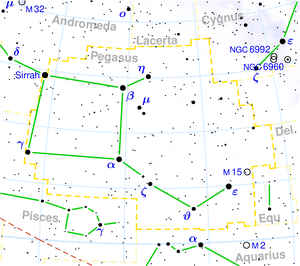"To Horses beyond all mortal
creatures cunning Nature has given a subtle mind and heart . . .”
From February 11, 2012, to February 26, 2012 the Sun will in the Pegasus Constellation ...
The Upper Zodiac mystery
... It is border of the Aquarius and the Pisces … this is spiritual - the transformation time ... This is more of a spiritual transformation of human life ... it's not
physical life time ... a human is sent to more suffering, emotions ...
February 11, 2012... Sun 22.5
degrees Aquarius ......
February 26, 2012...
Sun 7.5 degrees Pisces ...
The Upper Zodiac … The Second Sign -
“Winged Horse”
The Second Sign on the Upper Zodiac - the
Winged Horse… This 2nd sign is between
the Aquarius and Pisces… It is
Constellation Pegasus…
Antiquities there were winged horses. They very often represented them.
Chariots have been harnessed by these winged horses... Now the civilisation passes just through
Pegasus.... Pisces is the end of the era, and
are moving into an era of Aquarius … What does it mean?.. This desire to rise "over" to break
to the Heaven, desire of knowledge of secrets. It is creative process, pride of
spirit...
He/she
is the single who has broken to the top world, courage, bravery, high flight.
Our civilisation passes through a temptation arrogance, through Pegasus. The
highest role of the person which can change world events is connected With
Pegasus also….
With “Clock” of it was not. There all - small
screws in one system….And further there is a comprehension of the person. To
saddle a winged horse, to be able to rise over any elements….
PEGASUS
PEGASUS a winged horse, son of the Gorgon Medusa. It
was tamed by the hero Bellerophon who rode it into battle against the
three-headed monster Chimera. When he later tried to fly to heaven, he was
thrown back down to earth, but the horse was received and set amongst the stars
by Zeus...
PEGASOS (or Pegasus) was an immortal, winged horse which sprang forth from
the neck of Medousa when she was beheaded by the hero Perseus. Pegasos was
tamed byBellerophon, a Korinthian hero, who rode him into battle against the
fire-breathing Khimaira. Later, after the hero attempted to fly to heaven, the
gods caused the horse to buck, throwing him back down to earth. Pegasos
continued to wing its way to heaven where it took a place in the stables of
Zeus…
The
horse was also placed amongst the stars as a constellation, whose rising marked
the arrival of the warmer weather of spring and seasonal rainstorms. As such he
was often named thunderbolt-bearer of Zeus. In the constellation myths, Pegasos
("Springing Forth") may have represented the blooming of spring
whilst Khimaira ("Frosty Air" ?) (perhaps winter-rising Capricorn)
was the cold chill of winter….
Pegasus
lastly was also regarded as the horse of the Muses, and in this capacity he is
more celebrated in modern times than he ever was in antiquity ; for with the
ancients he had no connection with the Muses, except that by his hoof he called
forth the inspiring well Hippocrene. The story about this well runs as follows.
When the nine Muses engaged in a contest with the nine daughters of Pierus on
Mount Helicon, all became darkness when the daughters of Pierus began to sing ;
whereas during the song of the Muses, heaven, the sea, and all the rivers stood
still to listen, and Helicon rose heavenward with delight, until Pegasus, on
the advice of Poseidon, stopped its rising by kicking it with his hoof…
"Pegasus, offspring of Neptunus
(Poseidon) and the Gorgon Medusa, who on Helicon, a mountain of Boeotia







Komentarų nėra:
Rašyti komentarą